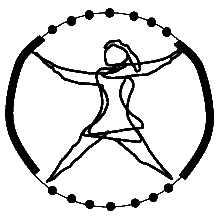Intervention is Architecture, a learning process
finding the spirit of a place and giving it the tools to engage with its larger
world
_______
 Making
one's relation with one's own environment whole is a matter of finding and
fulfilling the opportunities to do so, new discoveries and sustained
relationships. The circle is partly a matter of your
connecting your environments dots, and partly the environment connecting yours.
Making
one's relation with one's own environment whole is a matter of finding and
fulfilling the opportunities to do so, new discoveries and sustained
relationships. The circle is partly a matter of your
connecting your environments dots, and partly the environment connecting yours.
The site map at the left is from a now inactive wiki workspace I had set up for client use and offering help on my architectural 4Dsustainabiliy design consulting. It still has good content and is worth exploring. The idea of environmental exploration as a design method didn't click, though. That's partly because what you discover goes beyond and in some ways conflicts with the popular "set model" of sustainable design presently practiced in architecture ( i.e. comes to quite opposite conclusions on the path to sustainability in some ways). So, that project is retired for the moment. Below are a couple notes that I need to incorporate someday...
The original front page for the Connections wiki is the top link in the site map menu.
4/8/12 Related collections of guidance for systems intervention, considered as a process of learning about and engaging with the natural systems, are found on the blog Reading Nature's Signals generally, its posts for teachers more specifically, like the discussion of how Henshaw and Alexander "pattern language" are linked as ways of understanding how nature does design.
My methodological approach to exploratory learning has 4 Dimensions, internal, external, "long shots" and "whole effects" (whole system measures) . Having a practice of poking around your familiar internal and external environments with fresh eyes, responding to new things that respond to you, is the basic practice of the design cycle. It imitates what nature does with "more eyes and more hands" working at once. It's a method for helping 'random' (experimental) mutation become innovations that develops without conflict. It leads to discovering new veins of successively more responsive aspects of your environment, first for inward development and then turning to outward engagement. Trying occasional 'long shots' leads you to connect with other environments, to connect the silos in a strong rather than weak fabric.
2/26/2010 Response to email from Aleks about business investment concepts.
> There's an article on the demise of Yahoo that I find inspiring;
>
paul.kedrosky.com/archives/2006/11/18/yahoos_peanut_b.html
Yes, being mediocre at everything is not a great strategy. It's building indirectly on success, that is the exploratory model for seeking opportunity I observe nature using most effectively. It results in a persistence for making promising new things that really work, and "really" here meaning that after developing inwardly they are also good at turning outwardly.
Jessie Henshaw...contact